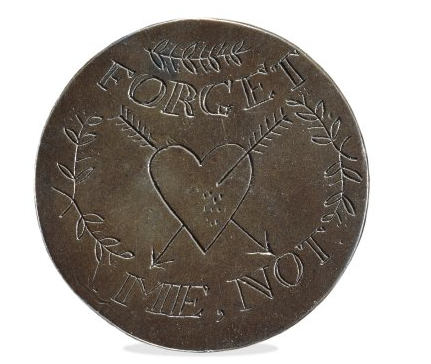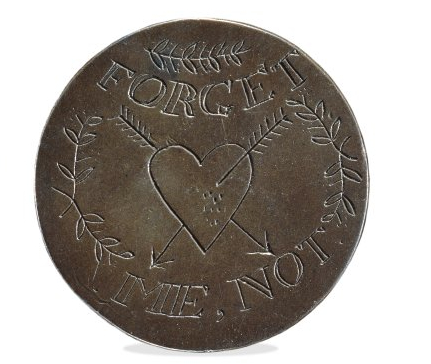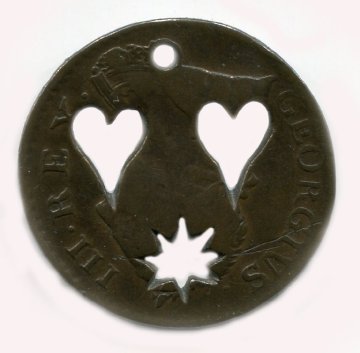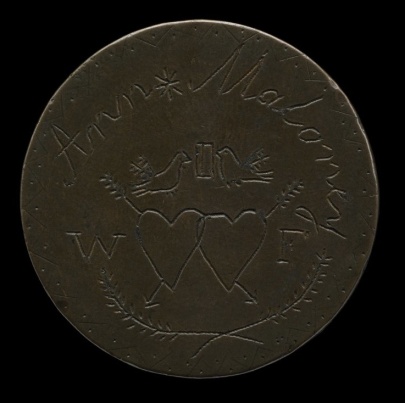In the era of instant messaging and online chat, the modern suitor is only ever a ‘winky face’ and a click away from declaring his amorous intentions. All things considered, I’d say courtship has taken a distinctly unromantic turn.
Two hundred years ago, love tokens offered a far more enduring and emotive means of expressing devotion to a cherished person (often, but not always, a lover). Acceptance of the token generally symbolised a return of affection. One common practice was to personalise coins, usually by smoothing and engraving them with a message or romantic imagery; the time and painstaking effort that was clearly required can only hint at the emotion invested in the objects themselves.
The coins below, ranging between the 1770s and the 1820s, are particularly touching examples of the material culture of romantic love. The inscriptions of the first and third suggest that many were created to serve as a constant reminder of love during periods of separation.
Here, a bronze penny of 1797 has been smoothed and engraved with “Forget Me Not” and a pierced heart.
On this token, dating from sometime after 1772, the suitor has cut hearts and a star into a coin. The circular hole at the top would have allowed the owner to thread the token and wear it around their neck.
This token from 1825 was probably given to Ann Maloney by a suitor identified only as “W.F”. Again, the alloy disc has been engraved with traditional emblems of love such as entwined pierced hearts and two doves. On the reverse is inscribed : “Tho lost to sight, the Memory dear.”
Images courtesy of the British Museum
[Note: If you want to know more about the material culture of love in the eighteenth century, do follow @sally_holloway]




We recently released a new interface to our collection of 314 convict love tokens: http://love-tokens.nma.gov.au/ – all the more poignant when you consider that the giver was being transported to the other side of the world, most likely never to see their loved one again.
Cath
Hi Cath, thanks so much for posting this – some of them are quite heartrending. E
Reblogged this on Gogwit's Blog.